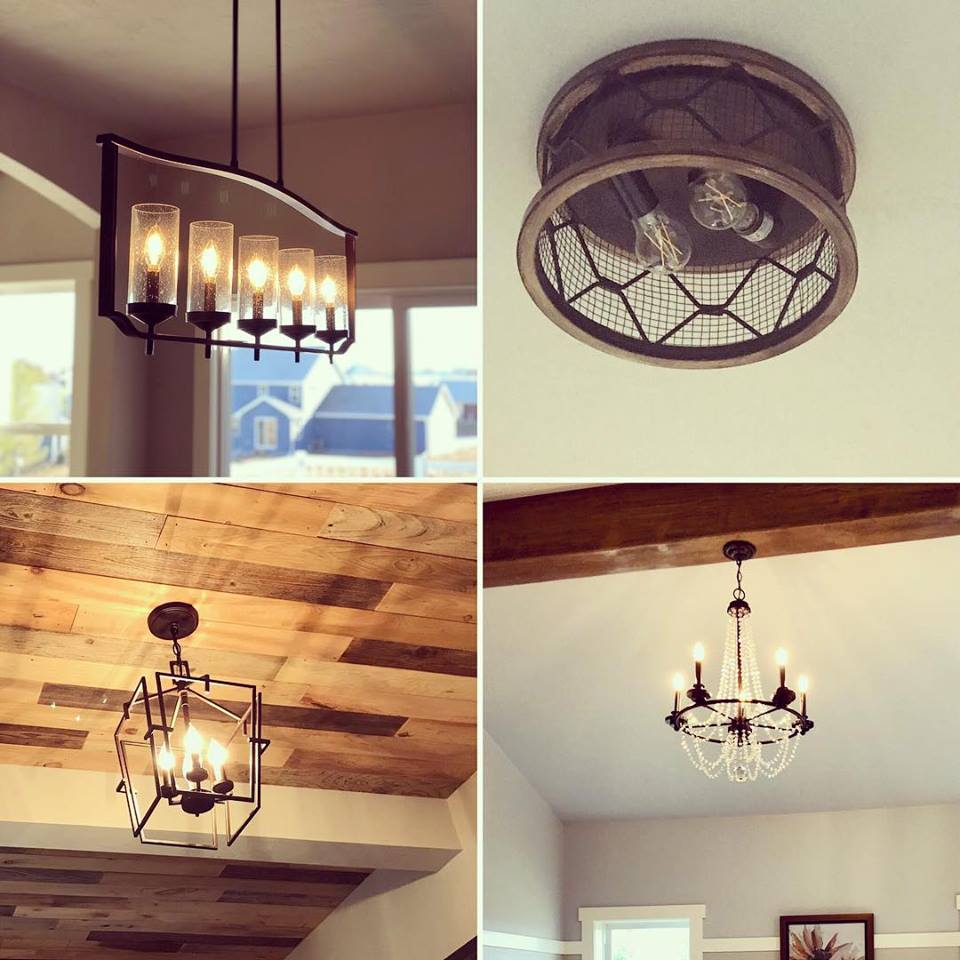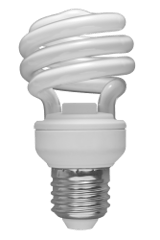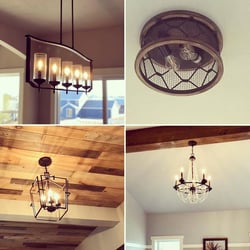
Light Bulbs: Little Details, Big Cost Differences
March 15, 2019
Published by Greg Drusch
The type of light bulbs you use in your home can have a big impact on your energy costs each month. Traditional incandescent light bulbs have been fading in place of more efficient products like compact fluorescent lights (CFL) and light emitting diodes (LED), but what’s the difference?
Traditional Incandescent Light Bulbs
Incandescent bulbs use to be the only options we had access to. It is an electric light with a wire filament that is heated to a point where it glows. The higher the wattage, the brighter the bulb gets. Unfortunately these bulbs use a lot of energy and burn out relatively quickly. Incandescents are so wasteful, that legislation is actually being passed to phase out these types of bulbs.
Compact Flourescent Lamp (CFL)

Compact fluorescent bulbs are more efficient than traditional incandescents – they work by running electric current through a tube that contains argon and mercury vapor. This process creates ultraviolet and visible light. According to Green is Better, CFL’s use about 70% less energy and last years longer than traditional incandescent lights. They do however, come with some annoyances: They take some time to warm up and reach full brightness, many cannot be used on a dimmer switch, and they contain mercury (so they should be recycled at a CFL recycler).
Light-emitting diodes (LED)
At Cypress Homes, we feel that LED bulbs are the superior choice so we only use LED bulbs in all of our homes. LED bulbs bring together currents with positive and negative charges – this releases energy in the form of light. According to Focus on Energy, LED bulbs use up to 90% less energy and last up to 25 times longer than incandescents. In comparison to CFL bulbs they are more efficient and last significantly longer. Historically, LED’s have been more expensive than the other 2 light bulbs mentioned above, but today they can be purchased for as little as $1 per bulb. In addition to longer life and greater efficiency, LED bulbs stay cool even during use and can be used on a dimmer switch.
Lighting accounts for approximately 20% of the average home’s electric bill (Focus on Energy) so Cypress decided to make a simple change that results in substantial energy savings for our homeowners – Using all LED bulbs in our new homes is one of the things that helps our homes test at least 25% more efficient than code.
For more ideas on how you can save energy in your home check out our previous blog (4 Home Features that Actually Pay for Themselves) or contact us with questions.
Categorized in: Home Tips, Cypress Homes, Design
This post was written by Greg Drusch
 Blueprints Blog
Blueprints Blog
- Custom Westridge
- The Ava - Finale Condo Community
- Custom Home Built in Wolf River, WI
- Beautifully Crafted Custom Ranch
- Cypress Homes Tree Seedling Program 2025
Popular Posts
Archives
- July 2012 (16)
- November 2011 (13)
- April 2020 (10)
- June 2012 (9)
- July 2013 (9)
- July 2016 (9)
- August 2016 (9)
- October 2016 (9)
- November 2016 (9)
- October 2017 (9)
- January 2012 (8)
- June 2016 (8)
- September 2016 (8)
- April 2017 (8)
- October 2011 (7)
- May 2012 (7)
- November 2012 (7)
- June 2013 (7)
- February 2017 (7)
- December 2011 (6)
- March 2012 (6)
- October 2013 (6)
- January 2017 (6)
- September 2017 (6)
- November 2017 (6)
- March 2020 (6)
- February 2012 (5)
- September 2013 (5)
- March 2017 (5)
- March 2019 (5)
- July 2019 (5)
- July 2020 (5)
- August 2020 (5)
- September 2020 (5)
- March 2021 (5)
- April 2021 (5)
- February 2023 (5)
- August 2012 (4)
- April 2014 (4)
- December 2016 (4)
- February 2019 (4)
- August 2019 (4)
- October 2019 (4)
- November 2019 (4)
- June 2020 (4)
- June 2021 (4)
- September 2021 (4)
- October 2021 (4)
- March 2022 (4)
- June 2024 (4)
- September 2012 (3)
- August 2013 (3)
- November 2013 (3)
- May 2017 (3)
- June 2017 (3)
- January 2019 (3)
- April 2019 (3)
- May 2019 (3)
- June 2019 (3)
- May 2020 (3)
- August 2021 (3)
- January 2022 (3)
- February 2022 (3)
- October 2022 (3)
- July 2024 (3)
- September 2024 (3)
- December 2024 (3)
- January 2025 (3)
- January 2013 (2)
- February 2013 (2)
- March 2013 (2)
- April 2013 (2)
- May 2013 (2)
- January 2014 (2)
- February 2014 (2)
- June 2014 (2)
- August 2014 (2)
- October 2015 (2)
- April 2016 (2)
- July 2017 (2)
- August 2017 (2)
- December 2017 (2)
- January 2018 (2)
- September 2018 (2)
- November 2018 (2)
- September 2019 (2)
- December 2019 (2)
- January 2020 (2)
- October 2020 (2)
- November 2020 (2)
- December 2020 (2)
- January 2021 (2)
- February 2021 (2)
- July 2021 (2)
- November 2021 (2)
- December 2021 (2)
- November 2022 (2)
- March 2023 (2)
- June 2023 (2)
- September 2023 (2)
- May 2024 (2)
- October 2024 (2)
- November 2024 (2)
- April 2025 (2)
- May 2025 (2)
- April 2012 (1)
- October 2012 (1)
- December 2012 (1)
- November 2014 (1)
- January 2015 (1)
- March 2015 (1)
- April 2015 (1)
- May 2015 (1)
- July 2015 (1)
- August 2015 (1)
- November 2015 (1)
- December 2015 (1)
- February 2016 (1)
- May 2016 (1)
- February 2018 (1)
- March 2018 (1)
- April 2018 (1)
- June 2018 (1)
- February 2020 (1)
- May 2021 (1)
- April 2022 (1)
- May 2022 (1)
- June 2022 (1)
- August 2022 (1)
- September 2022 (1)
- December 2022 (1)
- August 2023 (1)
- October 2023 (1)
- December 2023 (1)
- April 2024 (1)
- August 2024 (1)
- February 2025 (1)
- March 2025 (1)
- June 2025 (1)
- August 2025 (1)
Blog Categories
- Home Tips (193)
- Design (190)
- Cypress Homes (168)
- Custom Homes (100)
- Living Tips (88)
- Uncategorized (67)
- Area Events (66)
- Community Profiles (31)
- Poll Winners (25)
- Testimonials (24)
- Featured Subdivisions (23)
- Cypress In The News (16)
- Winterizing (9)
- Home Care (7)
- Home Space of the Month (7)
- In the News (6)
.png?width=523&height=243&name=white-cypress-homes-logo-1%20(1).png)


